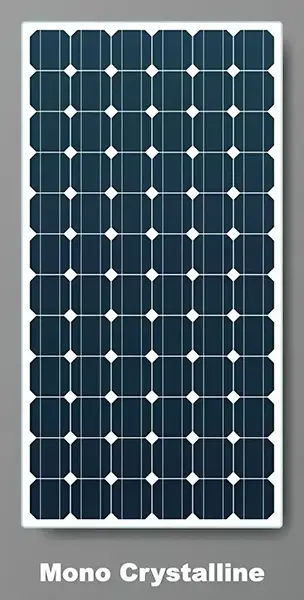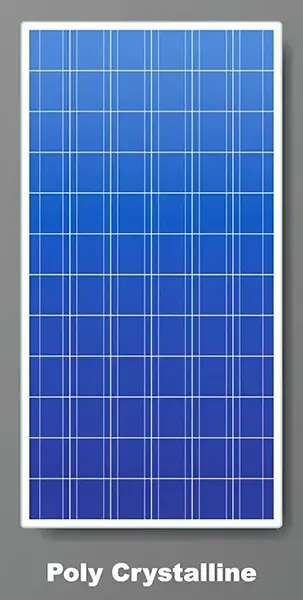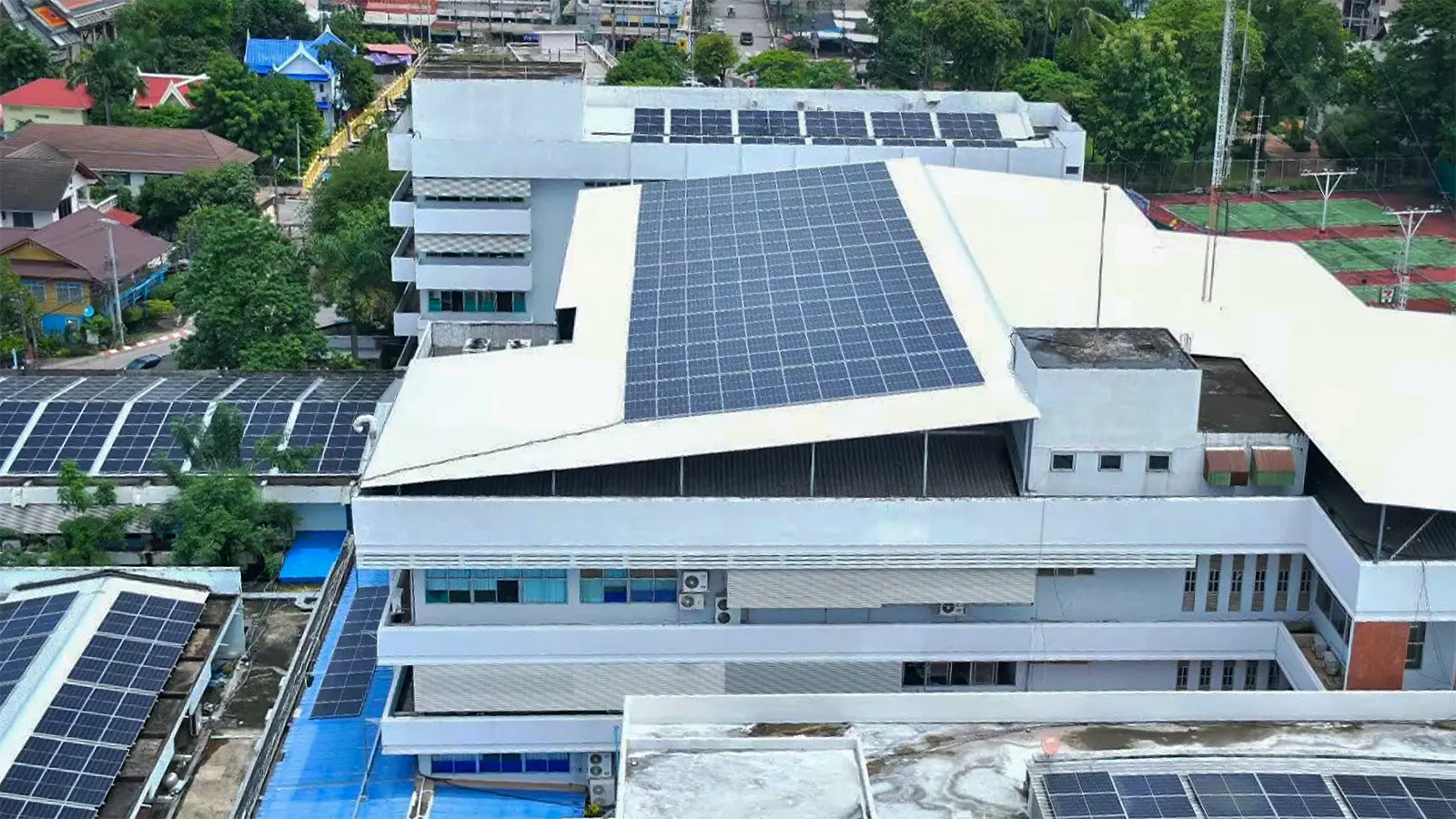News and activities
Types of solar cells

How many types of solar cells are there? How should you choose? Let's take a look!
Today we will talk about solar cells. Many people have probably heard that solar cells are a technology that helps convert sunlight into electrical energy. But did you know that there are many different types of solar cells, and each type is different?
How many types of solar cells are there?
Solar cells are generally divided into three main types as follows
1. Monocrystalline solar cells
It is a solar cell made from pure silicon. It has a square shape and is completely black because the silicon crystals are arranged in an orderly manner, making it appear to have the same color throughout the sheet. It is more efficient in converting sunlight into electricity than other types of cells. It is suitable for areas that receive sunlight all day and require large quantities of electricity production.

Advantages of monocrystalline solar cells
- High efficiency: Converts more sunlight into electricity than any other type of cell.
- Long service life: Good weather resistance, can be used for many years.
- Produces consistent electricity: Even in low light conditions, it works well.
Disadvantages of monocrystalline solar cells
- The price is quite high: Because the production process is quite complicated
2. Polycrystalline solar cells
Solar cells are made from multiple silicon crystals sandwiched together in a square shape, but the color of the cells is dark blue or purple. When looking closely, you will see that there are seams between the silicon crystals. They are cheaper than monocrystalline cells, but their efficiency in producing electricity is slightly lower. They are suitable for installation in large areas, such as factories or farms.

Advantages of polycrystalline solar cells
- Cheaper: The manufacturing process is simpler, resulting in lower costs than monocrystalline cells.
- High temperature resistance: Works well in hot weather
Disadvantages of polycrystalline solar cells
- Lower efficiency: Produces less electricity than monocrystalline cells
- Unattractive appearance: Irregular silicon crystals cause the cell panel to have uneven color.
3. Thin Film Solar Cells
It is a thin and flexible solar cell made from various materials such as amorphous silicon, cadmium telluride, and copper indium galium selenide. It is the cheapest but has the lowest electricity production efficiency. It is suitable for installation in areas with space limitations, such as on steep roofs or in areas with little sunlight.

Advantages of Thin Film solar cells
- Light weight: Making it ideal for installation in confined spaces or on weak structures.
- Flexible: It can be bent, allowing it to be mounted on curved surfaces or designed into unusual shapes.
- Easy and quick to produce: The manufacturing process is not as complicated as crystalline silicon cells, resulting in lower production costs.
- Can be produced on a variety of surfaces: It does not require thick silicon sheets, allowing production on other materials such as glass, plastic or metal.
Disadvantages of Thin Film solar cells
- The efficiency of electricity production is still lower than: Compared to crystalline silicon cells
- The lifespan may be shorter: Because the materials used are more sensitive to heat and UV rays.
- The price per watt is still higher: Compared to crystalline silicon cells, it tends to decrease gradually as technology develops.
Comparison table of types of solar cells
| Feature | Monocrystalline | Polycrystalline | Thin Film |
|---|---|---|---|
| Structure | Pure silicon crystals are arranged in an orderly fashion. | Multiple silicon crystals connected together | A thin layer of semiconductor material is coated on the surface. |
| Efficiency | Maximum | Below Mono | Lowest |
| Price | Maximum | Below Mono | Lowest |
| Appearance | Jet black, smooth surface | Dark blue, rough surface, with seams | Colors vary depending on the coating material. |
| Service life | Longest | Medium long | Shortest |
| Weight | Heavy | Lighter than Mono | Lightest |
| Flexibility | Not flexible | Not flexible | Flexible |
| Temperature resistance | Good heat resistance | Good heat resistance | Good heat resistance |
| Suitable for | Installations requiring maximum efficiency | General installation, focusing on saving | Installation on curved surfaces or portable devices |
Which type of solar cell should I choose?
Selecting the right solar cells for your needs is important because it will affect the efficiency and lifespan of your entire solar power system. Let’s take a look at some of the factors to consider.
- Budget: If budget is limited, thin-film solar cells may be chosen, but if maximum efficiency is desired, monocrystalline solar cells should be chosen.
- Installation Space: If space is limited, thin-film solar cells may be chosen because they are thin and flexible.
- Electricity required: If you want to produce electricity in large quantities, you should choose monocrystalline solar cells.
- Environment: If you are in an area with high temperatures, you should choose solar cells that are heat-resistant.
Conclusion: Choosing the right solar cell for your needs will help you get the most out of solar energy and help reduce the use of fossil fuels.
Advice: Before deciding to install solar cells, consult an expert to get the right advice for your home or business. For more information, please contact Energy X Co., Ltd.

- 22 October 2024


